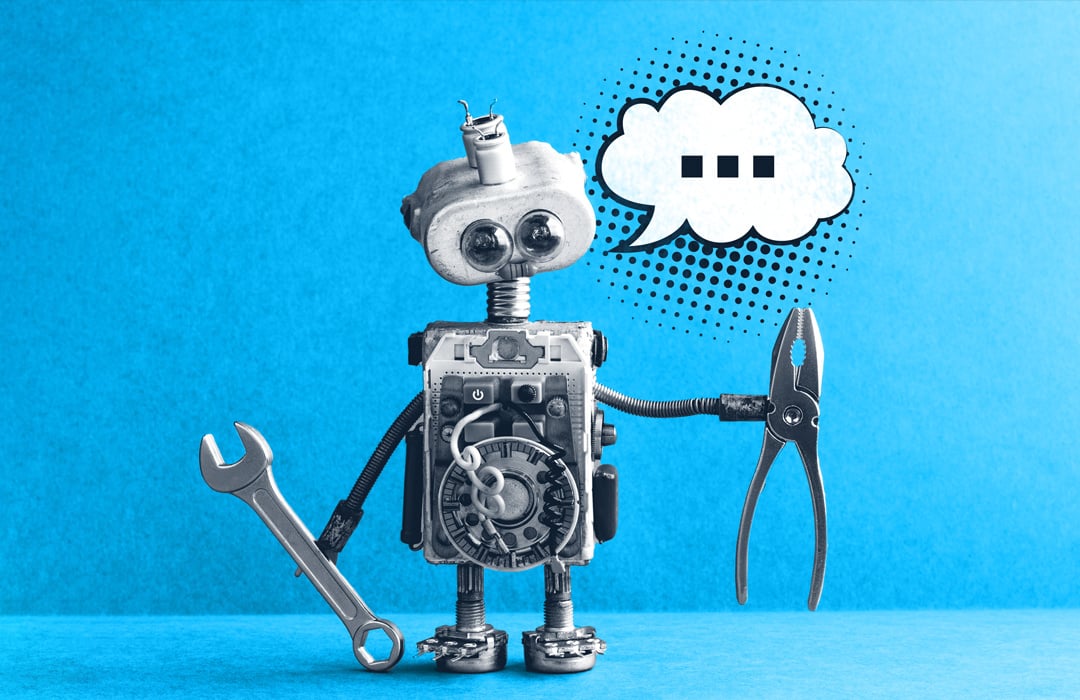Marketers are no strangers to the time-consuming task of compiling reports. From gathering data across multiple sources to interpreting analytics across different marketing channels, the reporting process can often feel like a full-time job. We’re sure you know where this is going, but the answer to streamlining these processes lies in artificial intelligence (AI).
Many AI tools have the capability to automate data collection, freeing up your team to focus on high-level strategies for important decision-making. By finding and using the right AI platforms, you can streamline your reporting workflows and deliver insights that drive real revenue for your organization. Let’s discuss 3 tips for gathering more efficient and effective reports for your marketing efforts.
1. Automate Data Collection and Cleaning
One of the most tedious aspects of reporting is the sheer volume of data that needs to be gathered from various sources. Whether it's social media metrics, website analytics, or email performance, manually extracting and consolidating this information can be a huge time sink. Your solution to this pain point lies in the power of AI. Some AI solutions, such as Alteryx and Supermetrics, can automatically fetch data from a wide range of platforms, including Google Analytics, Facebook Ads, and HubSpot. These tools use natural language processing (NLP) and machine learning algorithms to understand the structure and context of your data. This allows the AI tool to clean, normalize, and integrate it into a centralized dashboard. By automating this process, your team can save countless hours that would otherwise be spent on data wrangling. Additionally, AI-driven data collection is less prone to human error, ensuring that your reports are not only efficient but also accurate. Once your data is collected and cleansed, it’s time for the fun part, data analysis!
2. Leverage AI for Data Analysis and Insights
Thanks to AI, your data is now captured and centralized. But AI reporting capabilities don’t stop at data collection. Many modern analytics platforms, such as Domo, are integrating AI-powered features that can uncover insights far beyond what a human analyst could achieve. These algorithms can identify patterns, trends, and correlations within your data at lightning speed. For example, an AI-driven analytics tool might detect a strong correlation between your social media engagement and email open rates or reveal that certain audience segments respond better to specific campaign messaging. With this, your marketing team can spend more time making data-driven decisions for future marketing campaigns. Faster data insights allow for more agile marketing. Instead of relying on gut feelings or superficial metrics, you'll have a deep understanding of what's working, what's not, and why. This level of visibility can lead to more effective campaigns, higher ROI, and, ultimately, better business outcomes.
3. Create Interactive and Dynamic Reports
The final piece of the AI-powered reporting puzzle is the ability to transform static reports into engaging, interactive dashboards. Some tools you should look into for your business are Microsoft Power BI, Looker Studio, and Qlik Sense. These platforms leverage AI to generate comprehensive reports, allowing you to quickly build custom, branded visualizations no matter the data. Another great tool that has recently been unveiled is HubSpot’s AI Assistant reporting features. Within HubSpot’s reporting tool, simply tell the AI Assistant what you want a report for, and it’ll accurately generate a report based on your description. These AI-driven platforms can also update your reports in real-time, ensuring that your stakeholders always have access to the most current data. The dynamic nature of AI-powered reporting is a game-changer, especially for executives and decision-makers who need to stay on top of rapidly changing marketing metrics. Interactive dashboards powered by AI make it easier for your team and clients to explore the data, uncover insights, and make informed decisions. Finally, no more sifting through endless spreadsheets or PowerPoint slides – AI-enabled reporting puts the power of data analysis directly in the hands of your team and business stakeholders.
AI has the potential to revolutionize the way you approach marketing reporting. By automating data collection and cleaning, leveraging AI for deeper insights, and creating dynamic, interactive dashboards, you can streamline your reporting workflows and deliver more value to your organization. To get started, explore AI-powered tools like Crunch.io, Alteryx, Domo, Polymer, ThoughSpot, HubSpot’s AI Assistant, and Microsoft Power BI. Experiment with these solutions and see how they can transform your reporting processes. Remember, the key is to start small, measure the impact, and gradually expand your use of AI across your marketing reporting initiatives. The future of marketing is undoubtedly AI-driven, and those who embrace this technology will be well-positioned to stay ahead of the curve.
Want to stay up to date on more AI and marketing news? Subscribe to our Growth Ops Digest newsletter and receive more information like this on a biweekly occurrence!
